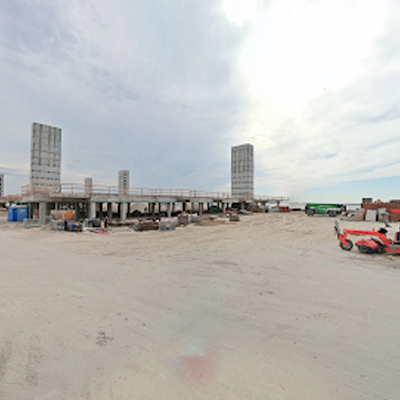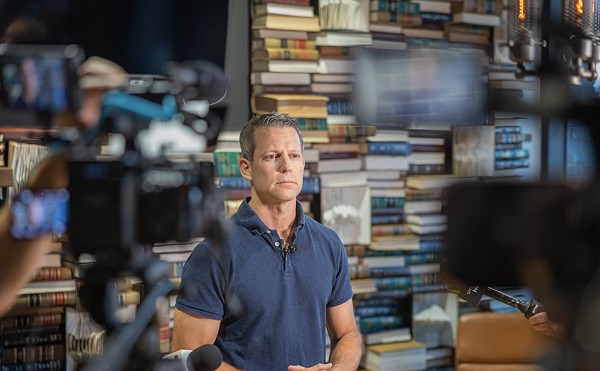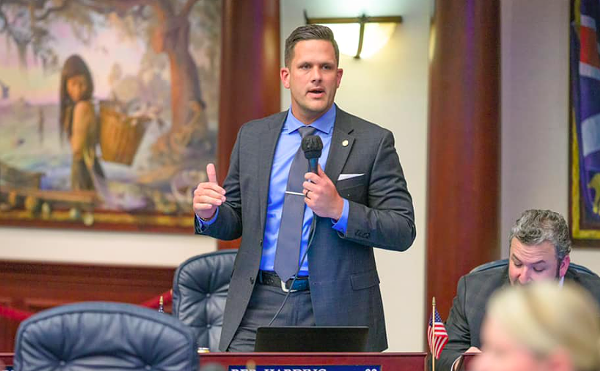Page 2 of 3
What's the biggest hurdle that you find when trying to landmark some of these historic buildings?
I think it's partly not appreciating the contribution that historic preservation makes to economic development to the city. We have a mindset out there that the two don't mix. I don't think that's true. I don't think research will support that oil-and-water theory of historic preservation and economic development. So I think we need to overcome that mindset.
I think that, again, part of the hurdle is that we do not have the plan and we need to build that plan, and to the extent possible that needs to be a plan that's supported by the total community. Not just historic preservation folks, but the city folks and the developers.
Looking back at your years with the Juvenile Welfare Board, what happens to children and families when these social service budgets are cut?
That is sad when you see children services and family services cut back the way they are. We have so far yet to go in this community in meeting the needs of our children and families. We keep looking at the glass being half filled up, and we don't look at the fact that it's half empty and now we're trying to cut back on that half-filled glass some more. Unfortunately, I think while there are many important public services, the services going to our children should be among the most important and priority should be established there. The psychology that one size fits all and we'll just reduce everybody's budget by 10 percent or an equal amount doesn't make sense. And one of the places where that doesn't make sense is in respect to children and families in the community.
We have issues of child abuse that need to be dealt with. We have issues of neglect and dependency that need to be dealt with. We're in the middle of a recession right now; we're having increasing unemployment throughout the country, including locally here. It's those social support programs that help enable a family to negotiate a job loss or a reduction in family income. And it's really short-sighted to cut back in those areas.
It's slamming families is what it's doing. It's slamming families and children. One of the things when I was a research consultant at JWB, we tracked juvenile delinquency and we tracked unemployment in Pinellas County. We found a remarkable statistical correlation between unemployment and youth delinquency throughout the community. Invest wisely now or spend a whole lot more later. I think what is happening is we are not investing wisely now and the consequences are that instead of spending a few hundred dollars to maybe a couple thousand dollars on a child through daycare or counseling program or foster care program that is of quality level, we end up spending $35,000 a year to incarcerate somebody 10, 15, 20 years from now. And that goes on year after year.
From a families perspective, it's really hard to get people to empathize. You know, it's more stories. It's the role for the press, the media, to do more stories. When you think of how many single parent women that we have that are caring for children, and some of them working two or three jobs just to make ends meet, and the lack of quality time that results between that mother and that child, it's a small wonder that the positive socialization that should be occurring gets replaced by TV sets or by some negative forces out on the streets. And it just compounds the problem.
To me, some of the lower income families — they must be magicians to be able to make it work. Just to keep food on the table, pay the bills and provide a decent shelter to their children, and over and above that.
You've been working with CONA on the "glitches" in the new land development regulations. What is the biggest glitch out there right now?
The one we just discovered this past week was that despite the fact that the City Council has agreed to start the process of putting Al Lang under the downtown park zoning, that while all the other downtown park zoning is limited to buildings 75 feet in height, the Al Lang site is not. Even if you zone it under parks, the way the land development regulations are written you can still build a 300-foot building on that particular site. That's being called a glitch, and it's a hell of a glitch. It does need to be corrected, and hopefully, there aren't any other reasons for the zoning regulations being written that way. I have no reason to believe they are.
















